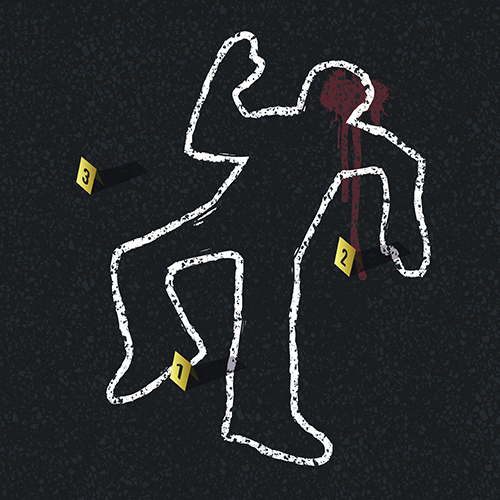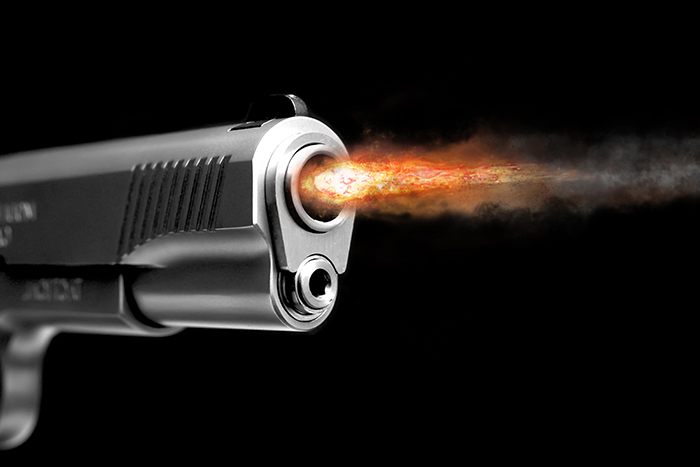Lakewood officer who fatally shot driver in May was involved in 2013 shooting that led to record wrongful-death verdict
Said Joquin & Leonard Thomas
Posted on August 14, 2020
 A Lakewood police officer who shot and killed a motorist during a traffic stop May 1 was also involved in the deadly shooting of a despondent Fife father in front of his 4-year-old son in 2013, resulting in a record $15 million wrongful-death verdict against the officer and his department. The city appealed the verdict and the suit was later settled for $13 million.
A Lakewood police officer who shot and killed a motorist during a traffic stop May 1 was also involved in the deadly shooting of a despondent Fife father in front of his 4-year-old son in 2013, resulting in a record $15 million wrongful-death verdict against the officer and his department. The city appealed the verdict and the suit was later settled for $13 million.
Officials with the Cooperative Cities Crimes Response Unit (CRU) identified the officer as Mike Wiley, an 18-year Lakewood Police Department veteran, and on Thursday said the investigation into the May 1 shooting was ongoing.
According to investigators, Wiley and another officer stopped a car driven by 26-year-old Said Joquin after it ran a stop sign at Whitman Avenue Southwest and Steilacoom Boulevard Southwest. Wiley, according to a CRU news release, approached the car and spotted a gun on the driver’s side floor. The release said he ordered Joquin and his passenger to put their hands up while another, unidentified Lakewood officer approached the passenger side of the car and called for backup.
“As the officers waited for additional officers to respond to the scene, the officers directed the driver and passenger to keep their hands up,” according to the release. “Both initially complied with directions. However, a few minutes into the incident, the driver lowered his arms, causing (Wiley) to believe the subject was reaching for the firearm. The officer fired his weapon, striking the driver multiple times.”
The other officer did not fire his weapon and the passenger was uninjured, the release said.
Puyallup Police Capt. Ryan Portmann, who is overseeing the investigation by the multiagency CRU, said neither of the officers wore body cameras and that investigators had sent video from a dash-camera on one of the vehicles out for forensic examination. Wiley has been placed on administrative leave pending the outcome of the investigation and an internal review to determine whether the shooting fell within department policy.
On May 23, 2013, Wiley was a team leader on a multiagency SWAT team in Pierce County that responded to the Fife home of Leonard Thomas after Thomas, who was drunk and upset over the death of a close friend, had argued with his mother about whether he was fit to take care of his 4-year-old son that night. The mother, Annalesa Thomas, called police after Thomas knocked a cellphone out of her hand while she was on the phone to 911 and retreated into the house with the boy.
Fife officers who arrived on the scene called for SWAT, which responded with a Bearcat armored vehicle and 21 heavily armed officers who surrounded the home, even though Thomas was suspected only of misdemeanor domestic-violence assault. Over the next four hours, Thomas refused to come out and demanded police leave him alone. At the time, Thomas was the custodial parent of the child and was not armed.
Mike Zaro, the Lakewood assistant chief at the time, and a hostage negotiator were in a command post and were talking to Thomas, who was angry and upset but never threatened violence against police or his child, according to trial transcripts and pleadings in a federal court lawsuit filed on behalf of Thomas’ son and parents. Zaro is now Lakewood police chief.
Within minutes of arriving on the scene, Wiley began planning an assault on the home by using an explosive device to blow down a back door, according to his statement and testimony of others at trial. Across the street, a SWAT sniper, Brian Markert, set up in a neighbor’s garage with a view of the home’s front door.
Over the next four hours, Thomas raged at police from inside his home but never threatened anyone, according to trial testimony. Wiley, however, said he was convinced Thomas was using the child as a human shield and that he was going to kill the boy, according to a statement he gave to detectives the next morning.
After nearly four hours, it appeared the incident was going to be resolved peacefully after a negotiator convinced Thomas to let the child go home with Thomas’ mother. Police would let him sleep it off and return in the morning to address the domestic violence incident with the cellphone. Thomas agreed to walk the boy to the front porch with his backpack and let him walk down the sidewalk to his grandmother, who was waiting near the armored vehicle.
Even as the deal between Thomas and the negotiator was being finalized, Wiley prepared to breach the back door with an explosive charge and Zaro, as SWAT commander, broadcast to the team that they were not to allow Thomas back into the house with the child. Several officers on the scene interpreted this as a “Delta” order, authorizing the use of deadly force. Thomas appeared on the porch with the boy and his backpack. The 4-year-old was moving toward his grandmother when Zaro authorized Wiley’s assault.
The explosion that blew down the back door was followed by gunfire as Wiley and another officer shot and killed the family dog inside the home. Thomas, who was with the boy in front of the house, startled and reached for his son and Markert, across the street, fired a single round from his rifle, striking Thomas in the belly as he held the boy. Thomas, who bled to death, begged officers not to hurt his son as they pulled the child from his arms, according to testimony.
Wiley can be heard on the police radio calling “Jackpot!” when Thomas went down. Later, he told investigators that Markert had made a “frickin’ million-dollar shot.”
Prosecutors in Pierce County found the shooting was necessary to protect the child’s life, and Zaro conducted an internal investigation into his own decision to authorize the shooting and found nothing wrong, according to court transcripts.
During the trial over their lawsuit, the Thomas family called an expert witness: Scott DeFoe, a decorated retired SWAT trainer and supervisor with the Los Angeles Police Department. He reviewed the incident and concluded the assault and use of deadly force were unjustified.
A civil jury in federal court heard 13 days of testimony and viewed hundreds of exhibits at a trial in 2017, and concluded that police repeatedly violated the rights of Thomas, his parents and his son. It awarded them $15.6 million in what was one of the largest police wrongful-death lawsuits in the state’s history.
The city appealed the verdict and later agreed to settle the case for $13 million. The family’s initial claim had been for $3.5 million.
Moreover, in an almost unprecedented finding, the jury held Wiley, Zaro and Markert individually responsible for $6.5 million in punitive damages that was intended to come from their own pockets. Wiley’s portion was $1.5 million.
The city publicly called the verdict “incomprehensible and demoralizing.” In court, it argued that the jury’s verdict was motivated by fear of racial backlash, since Thomas was an unarmed black man killed by police in the time of “Black Lives Matter” protests.
That prompted a blistering opinion by the trial judge, U.S. District Judge Barbara Rothstein, who said it was “insulting.” She said she had heard ample evidence for a jury to have concluded that Wiley, Zaro, Markert and others acted outrageously and with callous indifference to the life of Thomas, and the impact their actions would have on his young son and parents.
Mike Carter: 206-464-3706 or mcarter@seattletimes.com; on Twitter: @stimesmcarter.
SEE ALSO:
More Race Relations Articles
Sexual Bias Articles
Mental Health Articles
How Drugs and Alcohol Affect the Brain and Body
WA. Counselor Directory: find a therapist near you
How helpful is this web page to you?
(and how can we can improve this page for you?)
not helpful
very helpful
Other Articles
Cleveland Cop Who Killed Tamir Rice Is Rehired
A former Cleveland patrol officer who fatally shot Tamir Rice, a 12-year-old boy whose death in 2014 intensified national outrage over the killing of unarmed black men and boys, has been hired by a poli... read more
Fired but still a cop
How Washington States decertification process leaves troubled officers with their guns
In the span of two months, he slammed a driver to the ground using an unsanctioned takedown, allegedly called a Black suspect a “monkey,” and pepper-sprayed a suspect who was strapped down to a h... read more
I am a Black Police Officer. Here is How to Change the System.
Yes, defund the police. But then re-fund them, better.
NEWPORT NEWS, Va. — When I entered the police force in Virginia in 1987, I was one of the few Black officers in my department. On my first day on patrol, I was paired with an experienced white officer.... read more
Ahmaud Arbery
3 men indicted on murder charges in killing of Ahmaud Arbery
The fatal shooting of Ahmaud Arbery in Georgia has stoked a national uproar over race relations. No arrests were made for two months until video of the shooting surfaced. 3 men indicted on murder charges... read more
Tucson police in turmoil after death of Latino man
The police chief of Tucson, Arizona, abruptly offered to resign on Wednesday while releasing a video in which a 27-year-old Latino man, Carlos Ingram Lopez, died in police custody two months ago. The vid... read more
A monstrous breach of the First Amendment
“Congress shall make no law respecting an establishment of religion, or prohibiting the free exercise thereof; or abridging the freedom of speech, or of the press; or the right of people peaceably to a... read more







